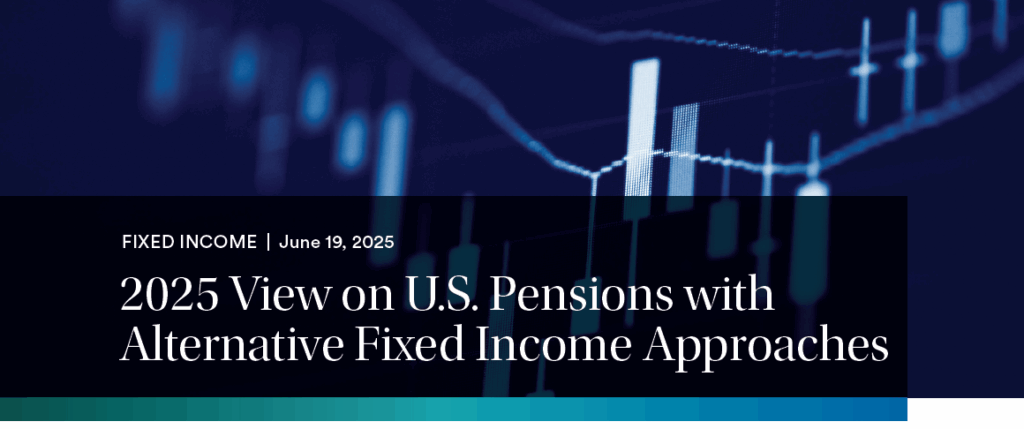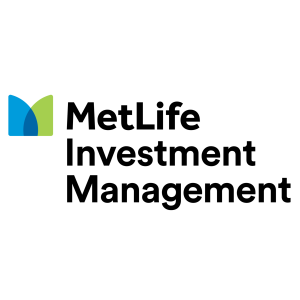2025 View on U.S. Pensions with Alternative Fixed Income Approaches


MetLife Investment Management
Executive Summary
Plan sponsors face a unique set of challenges that require a more dynamic approach to asset allocation. In this Q&A, the experts at MetLife Investment Management (MIM) explore how the interest rate environment and market volatility are prompting sponsors to pursue de-risking strategies by increasing and diversifying fixed-income allocations. We explore the innovative solutions investment managers are providing to help mitigate risk and diversify retirement portfolios to meet greater demands for steady cashflows from an aging population.
What is the most significant issue facing U.S. retirement plan sponsors today?
For pensions, funded status has improved across all plan types: corporate pensions, state and local government plans, and Taft-Hartley pensions are all better off. Focusing on corporate pensions as an example, plans have improved markedly over the past 10 years—peaking at 107.2% in February of 2025— up from the lowest levels estimated at 74.7% in June 2016 [Sources: Bloomberg, MIM analysis. As of 3/31/25]. This improvement has been driven by strong equity returns, higher bond yields, and higher discount rates that have reduced liabilities. These factors, alongside broader economic conditions present an opportunity to potentially reduce investment risk.
For savings plans, the primary challenge is developing viable retirement income solutions for an aging workforce. Pension coverage will continue to decrease, putting more burden on 401(k) plans to provide income.
"Now is an opportune time for pension plan sponsors to consider de-risking strategies, increasing bond allocations and reducing exposure to equities.” — Jeff Passmore, CFA, Lead LDI Strategist
What are the economic factors impacting pension investing?
Interest rates have reached levels not seen since the financial crisis. Ten-year Treasury yields have remained consistently near or above the 4% level since August of 2023, reflecting part of a multiyear recovery from the lows experienced during the Covid-19 pandemic.
This higher level for rates increases the relative attractiveness of bonds and decreases the cost of pension derisking. Many expect the next big rate move will be lower. The Fed’s pause provides an opportunity to derisk at favorable prices.
What other changes are driving shifts in asset allocations and investment strategies for plans, sponsors and participants?
The aging population is posing challenges to pensions and savings plans.
Pension plans are increasingly looking to bonds to help meet rising levels of benefit payments. The bond strategies that best fit plans today have a shorter duration than they did a decade ago due to pension closings and benefit freezes. This trend will continue as pension populations age faster than the general population. Plan sponsors are shifting toward intermediate bonds to address these shorter-term needs.
As bonds play a more prominent role in asset allocations, sponsors are also looking for diversification within fixed income. This includes segments of the market that provide both yield advantages and risk management. Investment-grade private credit is one solution to consider. MetLife Investment Management is one of the largest originators of investment-grade private credit. MIM has a long history of managing these bonds through credit cycles using deep industry knowledge, in-depth underwriting, and strong covenants.
Savings plans are seeing more assets move into bonds as workers near retirement. Target date funds can benefit from more sophisticated fixed-income solutions with simultaneous goals of providing lower volatility while still meeting income needs.
One way to potentially enhance incremental income and add diversification is with the addition of private credit. When strategically combined with traditional bond investments, private credit offers a compelling mix of reliable cash flow, capital preservation, low volatility, diversification benefits, and attractive yield premiums.
We offer a practical roadmap to a diversified allocation strategy: This strategy includes 20% in investment grade private credit, 60% intermediate corporate bonds, and 20% in asset-backed securities. This blend leverages the strengths of each segment—private credit for yield enhancement, intermediate corporate bonds for liquidity and stability, and asset-backed securities for additional diversification and
income potential. While this may not a solution for every plan, it highlights how a portfolio can be built with these different securities.
What role do you see private equity, private credit, and alternative investments playing in pension plan portfolios as they plan for the future?
We see interest in diversifying portfolios, especially fixed-income allocations. However, plan sponsors are increasingly focused on liquidity. Some are using the concept of an illiquidity budget as they consider how much they can allocate to new investment options that have less liquidity than publicly traded stocks and
bonds.
MIM is actively empowering clients and consultant partners with insights about our private credit underwriting process. Site visits, deep industry expertise, and long-standing borrower relationships are integral to our origination. These bonds have covenants that facilitate management through maturity, even during credit stress. Yet, we also understand private credit’s liquidity constraints, offering strategic guidance to navigate these challenges effectively.
Author

Jeff Passmore, CFA (Lead LDI Strategist)
Jeffrey (Jeff) Passmore is a Lead LDI Strategist for the Long Duration and LDI strategies team for MetLife Investment Management’s (MIM) Fixed Income group. He is a Credentialed Pension and Investment Actuary and Liability Driven Investment Strategist. Prior to joining MIM in January 2022, Jeff was a member of the Long Duration teams at Barrow Hanley Global Investors (BHGI) and Standish Mellon. Before working in investment management, he was an Investment Consultant, Consulting Pension Actuary, and the Retirement Practice Leader of the Texas offices for two global pension consulting firms. Jeff earned a B.S. in Mathematics from the University of Texas in Austin. He is a Fellow of the Society of Actuaries, a Member of the American Academy of Actuaries, two-time past chairperson of the Investment Section, and a current member of the Pension Section. He is a CFA® charterholder.
Disclaimer
This material is intended solely for Institutional Investors, Qualified Investors and Professional Investors. This analysis is not intended for distribution with Retail Investors. This document has been prepared by MetLife Investment Management (“MIM”)1 solely for informational purposes and does not constitute a recommendation regarding any investments or the provision of any investment advice, or constitute or form part of any advertisement of, offer for sale or subscription of, solicitation or invitation of any offer or recommendation to purchase or subscribe for any securities or investment advisory services. The views expressed herein are solely those of MIM and do not necessarily reflect, nor are they necessarily consistent with, the views held by, or the forecasts utilized by, the entities within the MetLife enterprise that provide insurance products, annuities and employee benefit programs. The information and opinions presented or contained in this document are provided as of the date it was written. It should be understood that subsequent developments may materially affect the information contained in this document, which none of MIM, its affiliates, advisors or representatives are under an obligation to update, revise or affirm. It is not MIM’s intention to provide, and you may not rely on this document as providing, a recommendation with respect to any particular investment strategy or investment. Affiliates of MIM may perform services for, solicit
business from, hold long or short positions in, or otherwise be interested in the investments (including derivatives) of any company mentioned herein. This document may contain forward-looking statements, as well as predictions, projections and forecasts of the economy or economic trends of the markets, which are not necessarily indicative of the future. Any or all forward-looking statements, as well as those included in any other material discussed at the presentation, may turn out to be wrong.
All investments involve risks including the potential for loss of principle and past performance does not guarantee similar future results. Property is a specialist sector that may be less liquid and produce more volatile performance than an investment in other investment sectors. The value of capital
and income will fluctuate as property values and rental income rise and fall. The valuation of property is generally a matter of the valuers’ opinion rather than fact. The amount raised when a property is sold may be less than the valuation. Furthermore, certain investments in mortgages, real estate or non-publicly traded securities and private debt instruments have a limited number of potential purchasers and sellers. This factor may have the effect of limiting the availability of these investments for purchase and may also limit the ability to sell such investments at their fair market value in response to changes in the economy or the financial markets.
This document is communicated by MetLife Investment Management, LLC (MIM, LLC), a U.S. Securities Exchange Commission registered investment adviser. MIM, LLC is a subsidiary of MetLife, Inc. and part of MetLife Investment Management. Registration with the SEC does not imply a certain level
of skill or that the SEC has endorsed the investment advisor.
1. MetLife Investment Management (“MIM”) is MetLife, Inc.’s institutional management business and the marketing name for subsidiaries of MetLife that provide investment management services to MetLife’s general account, separate accounts and/or unaffiliated/third party investors include Metropolitan Life Insurance Company, MetLife Investment Management, LLC, MetLife Investment Management Limited, MetLife Investments Limited, MetLife Investments Asia Limited, MetLife Latin America Asesorias e Inversiones Limitada, MetLife Investment Management Japan, Ltd., MIM I LLC, MetLife Investment Management Europe Limited and Affirmative Investment Management Partners Limited.
